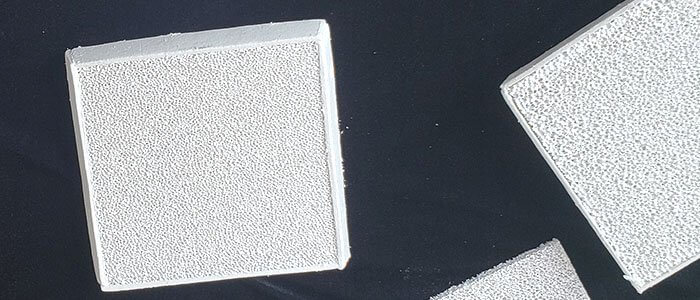Introduction:
Aluminium casting is a crucial process in modern manufacturing, enabling the creation of intricate and complex components used in various industries. The advent of aluminium casting revolutionized the production of lightweight and durable parts, leading to its widespread adoption across sectors such as aerospace, automotive, construction, and electronics. One vital aspect of improving the casting process has been the development of alumina filters, specifically the aluminium ceramic foam filter, which has played a significant role in enhancing the quality and efficiency of cast aluminium products.
The Evolution of Aluminium Casting:
The history of aluminium casting can be traced back to the early 19th century when Sir Humphry Davy discovered the metal aluminium in 1808. However, it was not until the 1880s that the Hall-Héroult process was invented, making the large-scale production of aluminium feasible. This process involved electrolyzing alumina (aluminium oxide) dissolved in molten cryolite (Na3AlF6), allowing the extraction of aluminium metal. The development of this process significantly reduced the cost of producing aluminium, making it more accessible for various applications.
The use of aluminium casting in industrial applications gained momentum during the early 20th century, especially with the growth of the automotive and aerospace industries. Casting techniques were continuously refined, leading to the development of sand casting, die casting, and investment casting methods. Each method offered distinct advantages, enabling the production of aluminium components tailored to specific requirements.
The Emergence of Alumina Filter Production:
As aluminium casting became more sophisticated, manufacturers encountered challenges related to impurities and defects in the cast products. One of the critical issues was the presence of non-metallic inclusions, such as oxides and impurities, which negatively impacted the castings’ mechanical properties and surface finish. In response to these challenges, alumina filters were introduced to improve the casting process.

The Early Stages of Alumina Filter:
In the early stages of alumina filter production, basic ceramic filters composed of alumina (Al2O3) were used. These filters effectively trapped non-metallic inclusions, preventing their entry into the mould cavity during the casting process. Alumina filters provided a viable solution to improve the quality of castings and reduce rejections.
The Aluminum Ceramic Foam Filter Advancement:
As the demand for higher-quality castings increased, the development of advanced alumina filters gained prominence. The aluminium ceramic foam filter emerged as a breakthrough technology in aluminium casting. This filter is made from a reticulated ceramic foam structure of interconnected pores, creating a three-dimensional network.
The aluminium ceramic foam filter offers numerous benefits over traditional filters. Its unique structure provides a larger surface area for effective filtration, ensuring better removal of inclusions and impurities. Additionally, the foam-like design enables a more uniform flow of molten metal, reducing turbulence during casting and minimizing the risk of defects.
Furthermore, the increased efficiency of the aluminium ceramic foam filter allows for a reduction in casting cycle times and improved metal yield. Manufacturers across various industries widely adopted this technology, enhancing the quality of their cast aluminium products.
Conclusion:
Aluminium casting has come a long way since its inception, transforming modern manufacturing with its versatile and lightweight properties. The history of alumina filter production, particularly the evolution of the aluminium ceramic foam filter, has been instrumental in addressing casting challenges and improving the quality of cast aluminium products. As technology continues to advance, further developments in aluminium casting and filtration techniques can be expected, driving innovation in numerous industries and enabling the production of even more intricate and reliable aluminium components.


